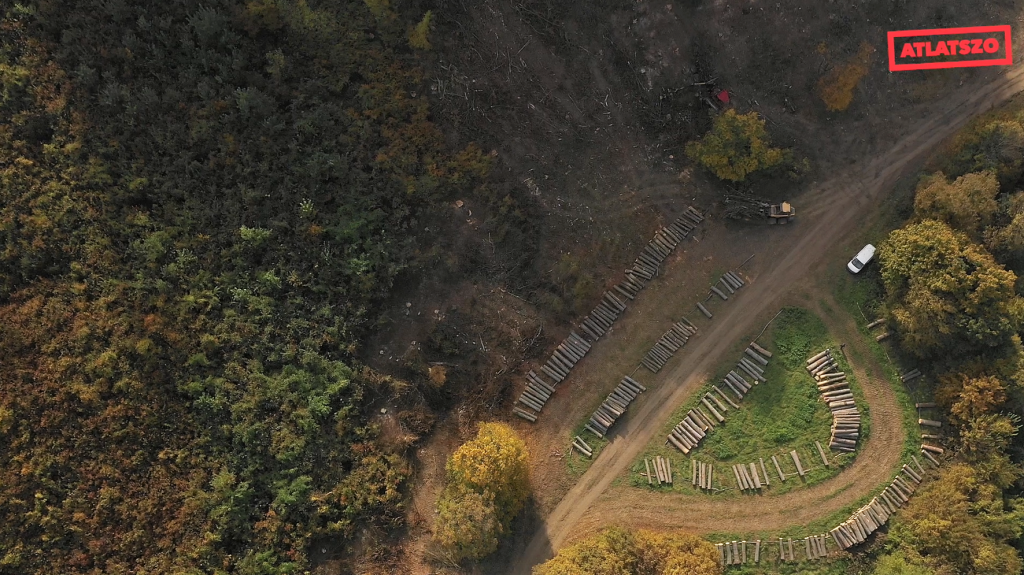The https://english.atlatszo.hu use cookies to track and profile customers such as action tags and pixel tracking on our website to assist our marketing. On our website we use technical, analytical, marketing and preference cookies. These are necessary for our site to work properly and to give us inforamation about how our site is used. See Cookies Policy
Drone video shows systematic destruction of protected forest in Hungarian countryside
Locals in the town of Szentgál claim that a protected yew forest in their area has been ravaged for twenty years. The relevant state authorities – the management of the local national park, the responsible government agency, and the local woods and forestry office – say that practically nothing severe is happening. Atlatszo investigated and took a drone video of the destruction.
The yew forest in Szentgál, a few kilometers from the town of Veszprém is a natural wonder with the largest natural stock of yew trees in the country. This is probably why officials of the Balaton-felvidéki National Park have been concerned about the forest.
The national park says that there are two factors hindering the adequate growth and reproduction of the trees. First, deer chew on the saplings. Second, beeches and other large trees that lend a natural, essential shade to the yew trees have grown to block out much of the sunlight now.
A logical solution to both problems is the forestry thinning the foliage to let in more sunlight and build fences to keep out the deer.
The locals, however, feel that something is wrong. They see chopped wood being transported from the forest daily, while they deem the fence needless and detrimental. In fact, there is an existing wildlife fence, albeit somewhat shorter, which is being disassembled by the forestry, while the nearby trees are cut to make room for another, similar fence.
The drone footage shows that on the north-northeast part of the protected area the hillside has been cleared as far as 100-150 meters from the fence, which is hard to justify with the protection of the fence.
Hetek óta vágják a fákat a szentgáli tiszafás természetvédelmi területen – drónvideón a pusztítás from atlatszo.hu on Vimeo.
VERGA Zrt, the company managing the forest, promptly replied to our queries in detail, but avoided answering why the area mentioned above was cleared or why the fencing needs replacing – given the fact that the forestry claims to check up on the condition of the fence on a weekly basis and immediately repair any damaged parts.
Other confidential sources revealed that it was the National Park that drove the project all along to secure the reproduction of the yew trees. The forestry agency, however, insisted on generating income from logging to compensate for the HUF 15 million cost of the project.
Last year, state-owned VERGA Zrt. garnered a total of HUF 2.6 billion (more than 8 million euros at today’s exchange rate) in revenue and HUF 136 million in profits, so it is unclear why the company needed to secure extra funds to cover the expenses of the fence. (Read the official statement of the forestry here.)
VERGA Zrt. claims to follow its own forestry plans when extracting 1600 cubic meters of wood from an area of six hectares. The Balaton-felvidéki National Park has not yet replied to our questions. We will publish them as soon as we receive them.
Written by András Becker
English version by Péter László. You can read the original, Hungarian version of this story here.


